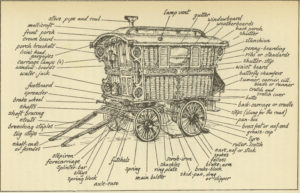
Romani travelers were recorded in the British Isles as early as 1500 AD. However, it wasn’t until the mid-1800’s that the VARDO became the signifier and heralded the coming of the Gypsies.
Known as vibrant, passion-minded, perhaps unorthodox people to the gaje society, privately Gypsies were family driven and held strong with heritage and tradition. These traits show themselves in the artful beauty of their wagons. They, as with many cultures, had a flair for the vainglorious and used the Vardo, their most prized possession, to symbolize wealth and status among the different traveling families. Much of the Gypsy tradition roams within the blood of their descendants and whispers to those not yet born into it.
The Reading Vardo, which is the design of our own wagon, dates from 1870 and takes its name from the original builder ~ Dunton & Sons of Reading. The upward and outward sloping sides marked it as a rich man’s wagon, allowing for a more spacious capacity in which to show off a wealth of treasures. Historically, the Reading was 10-13 feet long, with a porch on the front and back. The Catherine Wheel motif has long been a favorite application to the porch panels, symbolizing freedom and movement. The body itself would have been made from beaded tongue-and-groove matchboard, the size of an English half penny, also known as penny ha’penny.
It dazzled with lofty rear wheels which were 5 feet in diameter and 18” larger than those on the front. This set the floor of the wagon to just over 4 feet, allowing for the under-cupboard, which held the fire blackened cooking pots. Additionally, other boxes, often including chicken crates, hung from the hooks under the high chassis. Off the back a feeding cratch would be placed to hold fodder for the horses drawing the wagon. At the start of the 1900’s, the design incorporated raised skylights, known as mollicrofts, topping the wagon off at approximately 12 feet.
Inside the Vardo there would be a built in bed, lockered seat benches for storage, cupboards and an armoire. Side and back windows were shuttered and protected from breakage with interior window guards. The stove would be located on the lead side of the wagon. This was done specifically to reduce the danger of damage from low hanging tree limbs closest to the hedgerows along the roads less traveled.
Though taller, and seemingly unwieldy, the larger wheels of the Reading allowed for travel over rough ground that smaller wheeled wagons simply couldn’t have traversed. A fully equipped, non-outfitted, Reading wagon weighed in at a solid 3360 pounds, give or take. This particular wagon weighs 3580 pounds, allowing for current travel requirements.
Every aspect of the Vardo’s design and decoration was to showcase the wealth of the owner, and thus his status. Often gold gilding was applied for opulence. Craftsman carved lion heads, gargoyles and sumptuous fruit designs were woven throughout. Hand painted minutiae caressed every surface from the roof to the under carriage. These lavish rolling works of art, known throughout the world, remind us all of the unmistakable romance of the Romani Gypsy culture.
Below are the general classifications of Vardos. The sketch has left out the Brush style, which was typically the traveling storefront.
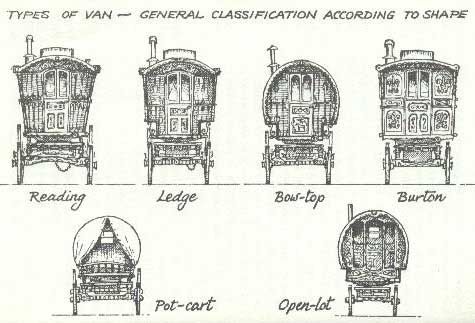
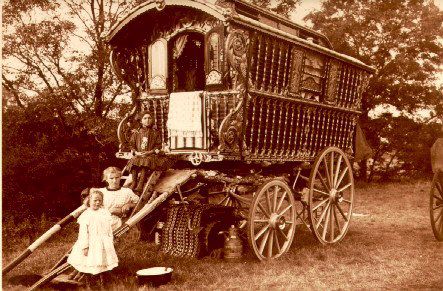
READING 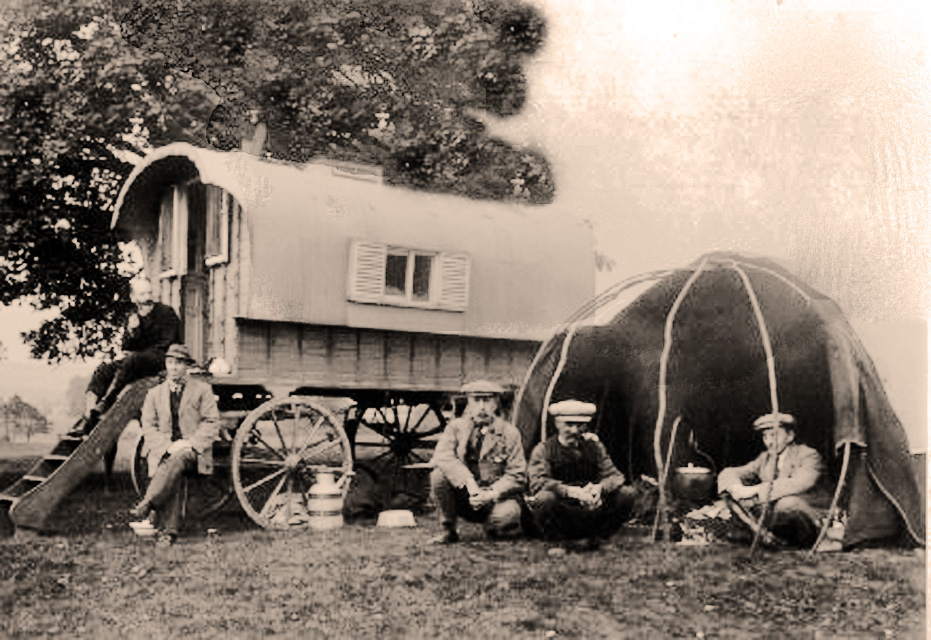
LEDGE 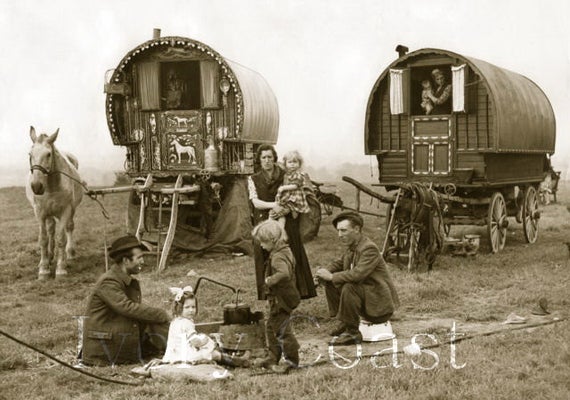
BOW-TOP 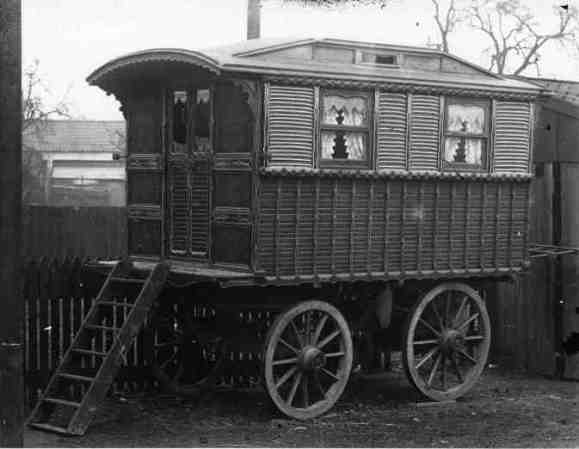
BURTON 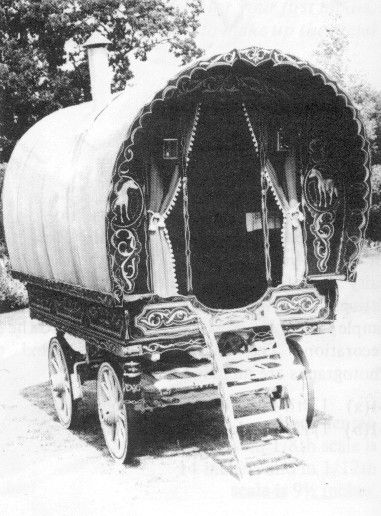
OPEN-LOT 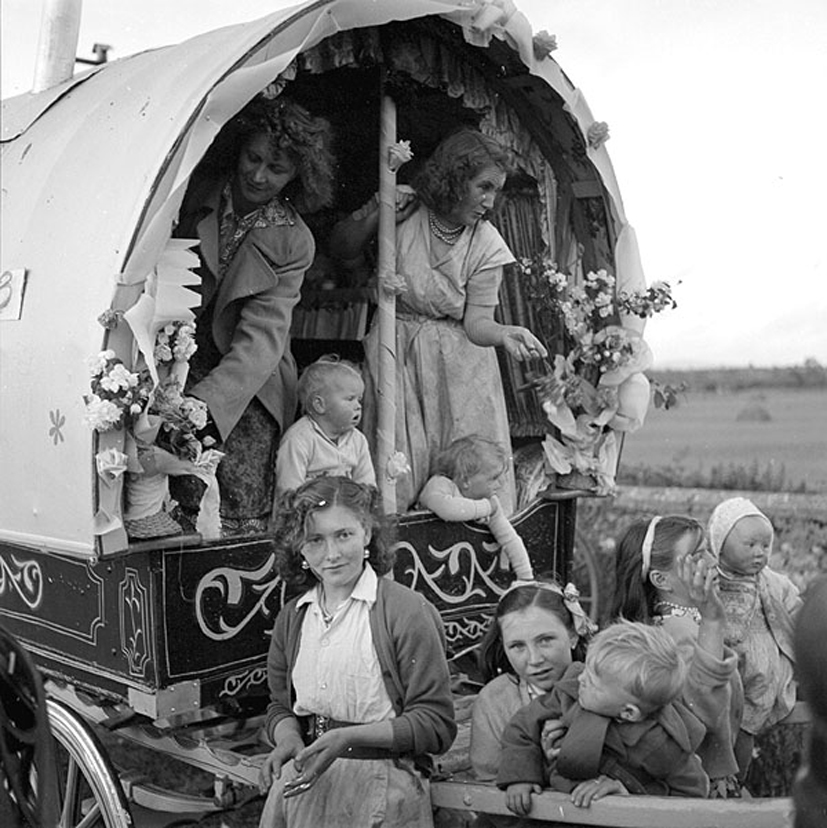
POT-CARD 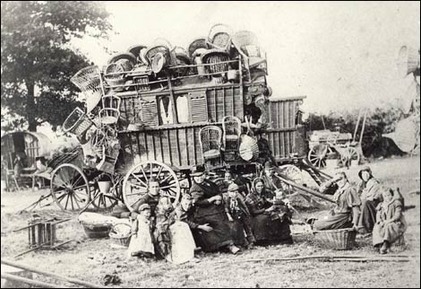
BRUSH
Our personal thanks to Raymond Buckland for sharing his knowledge with us, and Peter Ingram for being the master who inspires an ongoing revolution of Vardo restoration.